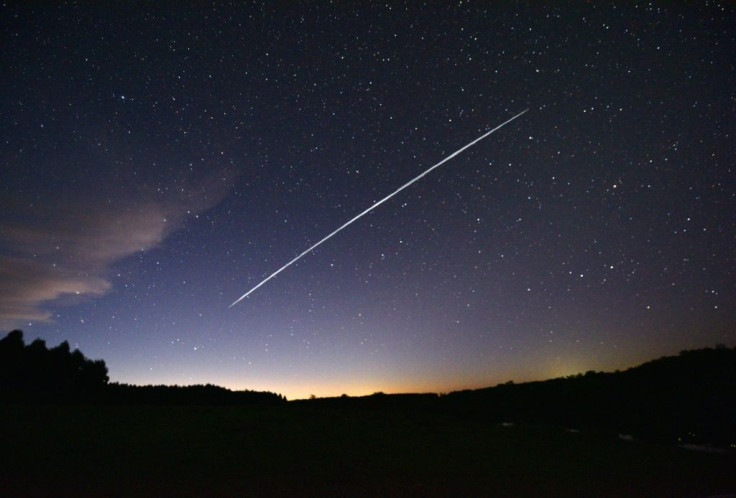Scientists Reveal Impact Of Starlink Satellites On Astronomical Observations
KEY POINTS
- Researchers looked at archival images from 2019 to 2021
- They found 5,301 streaks atributable to Starlink satellites
- Twilight observations are said to be "particularly affected"
Can satellite constellations in Low Earth Orbit (LEO) really affect astronomy? More and more twilight images are affected as SpaceX deploys more satellites, a team of researchers found.
SpaceX has been sending its Starlink satellites into orbit since 2019, and its 36th Starlink mission this week is set to bring 49 more to join the constellation of nearly 2,000 satellites. While this "megaconstellation" aims to bring reliable and fast internet service, it has also been a cause of concern among astronomers because of the potential of such LEO satellite constellations to obstruct the view of the cosmos.
In May 2021, for instance, skywatchers in places like Washington and Vancouver spotted a strange string of lights in the sky that turned out to be the Starlink satellites launched earlier that day.
To find the potential effects of such satellite constellations on astronomical surveys, a team of researchers had a closer look at the images captured by the Zwicky Transient Facility (ZTF) instrument, which operates from the Palomar Observatory close to San Diego, the California Institute of Technology (Caltech) noted in a news release. This particular instrument scans the night sky every two days, so it can observe changes in the sky over time, Caltech noted, adding that the researchers chose to focus on Starlink satellites as they are the largest LEO constellation.
"Here, we analyze the archival ZTF observations collected between 2019 November and 2021 September and find 5301 satellite streaks that can be attributed to Starlink satellites," the researchers wrote in their study, published in The Astrophysical Journal Letters on Monday. "We find that the number of affected images is increasing with time as SpaceX deploys more satellites."
According to the researchers, observations during twilight are particularly affected, with the percentage of streaked images increasing from 0.5% in late 2019 to 6% in late 2020, and even to 18% by August 2021. They estimate that "essentially all" of the ZTF twilight images would be affected once the Starlink constellation reaches 10,000, which SpaceX reportedly aims to achieve by 2027.
How much are @SpaceX Starlink satellites polluting the night sky? A new study, led by @przemroz looks at two years of @ztfsurvey data and presents hard evidence. The study appeared in ApJ today and the press release is front page on the @Caltech websitehttps://t.co/OXQXK5Hfvd pic.twitter.com/sWJAuL9GEv
— ZTF Survey (@ztfsurvey) January 17, 2022
That said, the researchers still noted that ZTF's science operations weren't "strongly affected" by the increase in satellite streaks.
"There is a small chance that we would miss an asteroid or another event hidden behind a satellite streak, but compared to the impact of weather, such as a cloudy sky, these are rather small effects for ZTF," study co-author, Tom Prince of Caltech, said in the news release.
Furthermore, non-twilight images may be spared of the possible impacts of the Starlink constellation, study lead author, Przemek Mróz of the University of Warsaw in Poland, said as per Caltech. That is, unless "satellite constellation of other companies goes into higher orbits."
The researchers also looked at the efficacy of SpaceX's efforts to redesign the Starlink satellites. In response to the concerns of the astronomical community, in 2020, SpaceX included visors that stop the sunlight from illuminating the satellites' surface so that their reflections would be fainter. The researchers found that the effort actually reduced the satellites' brightness by a factor of 4.6 compared to the original satellites, confirming that the strategy led to the satellites' "substantial darkening."
"However, many of our observations of visor-type satellites (≈ 67%) are still brighter than the recommendation #5 of the SATCON1 workshop," the researchers wrote.
For now, ZTF is still monitoring the Northern sky, and researchers expect it to capture even more LEO satellite streaks.
"New ZTF observations will allow us to monitor the problem and to provide input to the astronomical community as well as the satellite operators," the researchers wrote.

© Copyright IBTimes 2024. All rights reserved.






















